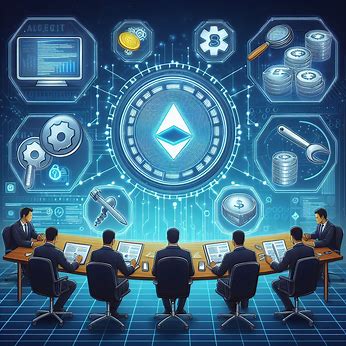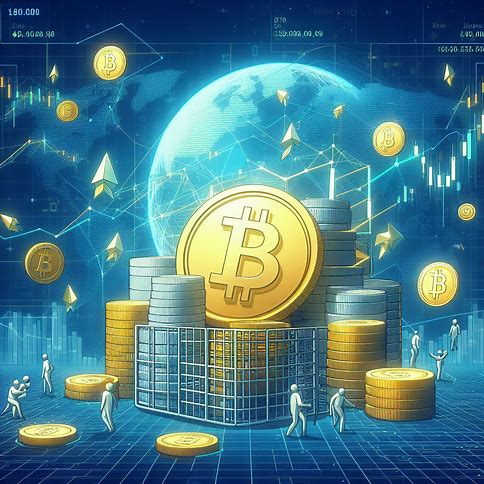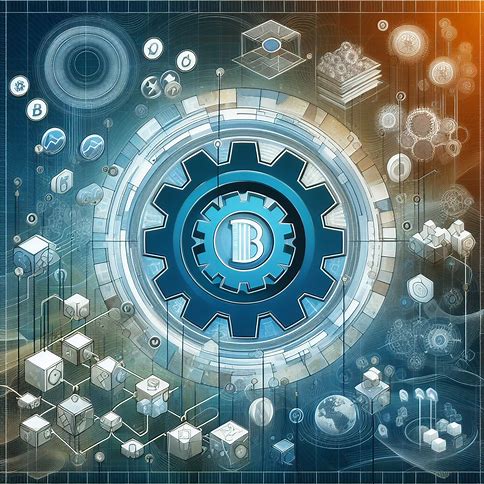Do you wish you could invest in a luxury hotel or a rare sports car? Tokenization is a technology that allows you to own a fraction of these high-value assets. Here are Tokenization of real assets for increased liquidity.
What is Tokenization?
Tokenization is the process of converting the ownership rights of a real asset into digital tokens on a blockchain. These tokens represent a fractional share of the asset, allowing multiple investors to own a piece of it. The asset could be anything of value, such as real estate, art, precious metals, or even a classic car. By tokenizing assets, the ownership becomes more flexible and accessible. Instead of one person owning the entire asset, it can be divided into smaller, more affordable shares. This opens up investment opportunities to a broader range of people who may not have had the means to invest in high-value assets before.
How Does Tokenization Work?
The tokenization process involves several steps:
1. Asset Identification: The first step is to identify the asset to be tokenized. This could be a single asset, like a building, or a collection of assets, like a portfolio of artwork.
2. Valuation: The asset undergoes a valuation process to determine its worth. This is usually done by professional appraisers or valuation firms.
3. Token Creation: Based on the valuation, digital tokens are created to represent fractional ownership of the asset. Each token represents a specific share of the asset’s value.
4. Smart Contract Development: A smart contract is developed to manage the token sale, distribution, and ongoing management of the tokenized asset. The smart contract defines the rules and conditions of ownership.
5. Token Sale: The tokens are offered for sale to investors through a platform or exchange. Investors can purchase these tokens using cryptocurrency or traditional currency.
6. Asset Management: Once the tokens are sold, the asset is managed according to the conditions set in the smart contract. This could involve distributing rental income to token holders in the case of real estate, or managing the maintenance and insurance of a tokenized car. The entire process is recorded on a blockchain, providing a transparent and immutable record of ownership and transactions.
Benefits of Tokenization
Tokenization offers several compelling benefits for both investors and asset owners:
1. Increased Liquidity: By tokenizing assets, the ownership becomes more liquid. Tokens can be easily bought and sold on digital platforms, making it simpler for investors to enter or exit their positions. This increased liquidity can potentially lead to higher asset values.
2. Fractional Ownership: Tokenization allows for fractional ownership of high-value assets. This lowers the barrier to entry for investors, as they can invest small amounts and still participate in the ownership of the asset.
3. Democratization of Investment: With tokenization, a broader range of people can access investment opportunities that were previously only available to wealthy individuals or institutional investors. This democratization of investment can lead to a more inclusive and diverse investor base.
4. Reduced Costs: Tokenization can reduce the costs associated with traditional asset ownership, such as legal fees, paperwork, and intermediaries. Smart contracts automate many of these processes, leading to cost savings for both investors and asset owners.
5. Improved Transparency: Blockchain technology provides a transparent and immutable record of ownership and transactions. This transparency can increase trust and reduce the risk of fraud or mismanagement.
Related: Retail, Institutional And High-frequency Trading Explained
Challenges and Risks
While tokenization offers many benefits, there are also challenges and risks to consider:
1. Regulatory Uncertainty: The legal and regulatory framework for tokenized assets is still evolving. There may be uncertainty around the classification of tokens as securities, and compliance with different jurisdictions’ laws can be complex.
2. Technical Challenges: Tokenization relies on blockchain technology, which is still developing. There may be technical challenges around scalability, interoperability, and security that need to be addressed.
3. Valuations: Determining the fair value of a tokenized asset can be challenging, particularly for unique or illiquid assets. Investors need to be aware of the potential for misvaluations or price volatility.
4. Liquidity Risk: While tokenization can increase liquidity, there is still the risk that investors may not be able to easily sell their tokens, particularly in market downturns or for less popular assets.
Real-World Applications
Tokenization is being applied to a wide range of real-world assets. Here are a few examples:
1. Real Estate: Tokenization allows for the fractional ownership of properties, making real estate investment more accessible. Investors can buy tokens representing a share of a building and earn a portion of the rental income or appreciation.
2. Art and Collectibles: Rare artwork, collectibles, and even fine wines can be tokenized. This allows for shared ownership and investment in these high-value assets, which were previously only accessible to a select few.
3. Commodities: Tokenization can be applied to commodities like gold, silver, or oil. Investors can buy tokens backed by these physical assets, providing a more convenient way to invest in commodities without the need for physical storage.
4. Venture Capital: Startup equity can be tokenized, allowing a wider pool of investors to participate in early-stage funding rounds. This can provide startups with access to a broader range of capital and give investors the opportunity to invest in private companies.
Key Takeaways
1. Tokenization is the process of converting the ownership of real-world assets into digital tokens on a blockchain, allowing for fractional ownership and increased liquidity.
2. The tokenization process involves asset identification, valuation, token creation, smart contract development, token sale, and ongoing asset management.
3. Benefits of tokenization include increased liquidity, fractional ownership, democratization of investment, reduced costs, and improved transparency.
4. Challenges and risks associated with tokenization include regulatory uncertainty, technical challenges, valuation difficulties, and liquidity risk.
5. Real applications of tokenization include real estate, art and collectibles, commodities, and venture capital.
6. The regulatory landscape for tokenized assets is still evolving, and compliance with securities laws and other regulations is a key consideration for asset owners and investors.
7. As the technology matures, tokenization has the potential to change the way we invest in and own assets, providing new opportunities for investors and asset owners while promoting financial inclusion and accessibility.
Frequently Asked Questions
1. What is the difference between tokenization and securitization?
Tokenization and securitization are similar in that they both involve dividing an asset into smaller units for investment. However, securitization usually involves creating financial instruments like bonds, which are backed by the cash flows of the underlying assets. Tokenization, on the other hand, involves creating digital tokens that represent direct ownership of a portion of the asset itself.
2. How are tokenized assets regulated?
In many jurisdictions, tokens may be classified as securities and subject to securities laws. However, the classification can depend on the specific characteristics of the token and how it is offered. Asset owners and investors should seek legal advice to ensure compliance with relevant regulations.
3. Can tokenized assets be traded on traditional stock exchanges?
Currently, most tokenized assets are traded on specialized digital asset exchanges. However, as the market matures and regulations become clearer, it’s possible that tokenized assets could be listed and traded on traditional stock exchanges.
4. What happens if the underlying asset of a token is damaged or loses value?
The value of a token is directly tied to the value of the underlying asset. If the asset is damaged or loses value, the token value will likely decrease as well. This is one of the risks that token holders need to be aware of. The specific handling of such situations should be outlined in the smart contract or terms of the token offering.
5. How do token holders receive income or benefits from the tokenized asset?
The specific benefits for token holders depend on the type of asset and the terms of the token offering. For example, with a tokenized rental property, token holders may receive a share of the rental income proportional to their token holdings. The distribution of income or benefits is usuy managed through the smart contract associated with the tokens.
6. Can any asset be tokenized?
In theory, any asset with value can be tokenized. However, some assets may be more suitable for tokenization than others. Assets that are easily divisible, have clear valuation methods, and have the potential for income generation or appreciation are generally good candidates for tokenization. Examples include real estate, art, commodities, and private equity.
7. What are the technical requirements for participating in a token offering?
To participate in a token offering, investors typically need a digital wallet that supports the blockchain platform being used for the tokens. They may also need to complete a verification process (known as Know Your Customer or KYC) to comply with anti-money laundering (AML) regulations. The specific requirements can depend on the platform and jurisdiction.










